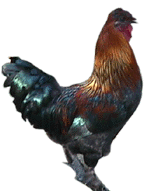Late each fall or early winter a family of about a dozen Indians would come around hunting skunks. Skunk furs were fashionable then and their pelts in demand.
That was before barbed wire was invented and fences were made of rails. Weeds and brush grew up along rail fences and made good cover for wild game and animals
. These Indians would walk along the fences, one on each side and if they found a hole with fresh skunk tracks they would take a willowy branch six or seven feet long and put it in the hole to locate the direction the hole took. They would then dig a hole down to the hole and repeat this until they could feel something moving; then another stick with a small forked end would be inserted into the hole and when in contact with the animal, turn it, and when turned in the fur and hide you could pull out the animal. The forked stick was used by one Indian called the Stink Indian, he would throw the skunk out and kill it with a club so as not to damage the hide.
We children had great admiration for this skunk killer and if the wind was in the right direction you could smell him half a mile away. He had his own tent and lived pretty much by himself while out skunk hunting.

